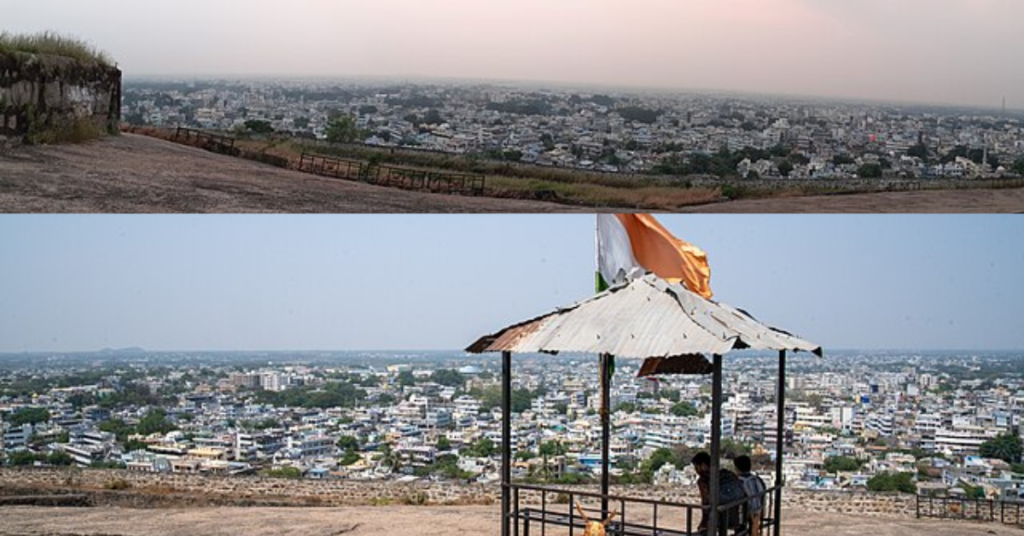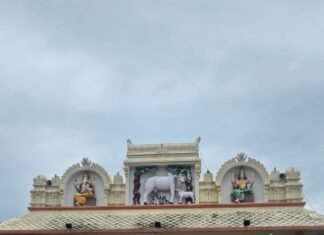Khammam Fort, located in Khammam district, Telangana, India, is a historical monument that reflects the region’s rich past. Though specific details about its construction and early history are limited. It’s believed to have been built during the reign of the Kakatiya dynasty.
The Fort has witnessed the rise and fall of various dynasties, including the Kakatiyas, the Bahmanis, the Qutb Shahis, and the Asaf Jahi rulers. Each era left its mark on the fort’s structure and character.

Historical Background of Khammam Fort
The history of Fort is deeply intertwined with the history of the region. Its construction began around 950 AD under the rule of the Kakatiya dynasty. The period was marked by prosperity and cultural advancements in the Deccan Plateau. The Kakatiyas, are known for their architectural prowess.

The fort was later expanded by the Musunuri Nayaks. who came into charge following the Kakatiya’s decline. They added new fortifications and structures, enhancing its defensive capabilities. However, the most significant contributions came from the Qutb Shahi rulers of Golconda. Under their reign, Khammam Fort saw the addition of several new buildings, including the beautiful Taramati Mosque. Which still stands as a symbol of Islamic architectural elegance.
The Asaf Jahi dynasty, also known as the Nizams of Hyderabad, further contributed to the fort’s grandeur in the 18th century. They reinforced its defenses and maintained its structures. Ensuring that Khammam Fort remained a bastion of power and culture in the region
Also Read: Golconda Fort Hyderabad: The Heart of Hyderabad’
Architectural Splendor Khammam Fort

It is a splendid example of a fort that has evolved over centuries, incorporating various architectural styles and techniques. The fort covers an area of about 4 square kilometers and is built primarily from granite and stone, materials chosen for their durability and strength.
The main entrance, known as the “Khilla Darwaza,” is an imposing gateway adorned with intricate carvings that showcase the artistic skills of the craftsmen of that era.
Inside the fort, one can find a mix of religious and secular buildings, including temples, mosques, and palaces. The Narasimha Swamy Temple, dedicated to Lord Narasimha, is a significant Hindu shrine within the fort, known for its beautiful carvings and serene ambiance.
Significant Structures Khammam Fort
Temples and Mosques: Khammam Fort houses several temples and mosques, reflecting the religious diversity of its builders. The Narasimha Swamy Temple is a highlight, attracting devotees and tourists alike. The Taramati Mosque, built during the Qutb Shahi period, is another notable structure, showcasing Islamic architectural beauty with its elegant minarets and prayer halls.

Taramati Mosque: This mosque, built by the Qutb Shahi rulers, stands as a testament to the Islamic architectural influence within the fort. It features a central dome flanked by minarets, with intricate carvings adorning its walls. The mosque’s prayer hall, with its arched entrances and serene interior, is a place of spiritual reflection and historical significance.
Stunning Views: One of the most captivating features of Khammam Fort is the panoramic view it offers of the surrounding landscape. The fort’s elevated position allows visitors to gaze upon the Munneru River flowing nearby and the lush greenery of the region. These vistas not only provide a visual treat but also underscore the strategic importance of the fort in monitoring and controlling the surrounding area.
Also Read: Bhongir Fort: A heritage and beautiful place of Telangana
Myths and Traditions of Khammam Fort
The Fort is steeped in legends and folklore. One popular tale speaks of a secret underground tunnel that connected the fort to the banks of the Krishna River, providing a clandestine escape route for the royals during times of siege. Although the tunnel remains elusive, it adds an air of mystery to the fort’s already intriguing history.

Cultural Significance
Today, Khammam Fort is not only a historical monument but also a cultural hub. It hosts various festivals and events, attracting tourists and history enthusiasts from across the country. The fort’s walls reverberate with the stories of its past, offering a tangible connection to the bygone eras.
Preservation Efforts
Recognizing its historical and cultural value, the Telangana government has undertaken several initiatives to preserve and restore Khammam Fort. Conservation efforts focus on maintaining the structural integrity of the fort while ensuring that its historical essence remains intact for future generations.

Visitor Information
Khammam Fort is open to visitors throughout the year. Guided tours are available, providing detailed insights into the fort’s history and architecture. The fort is easily accessible by road, with Khammam town well-connected to major cities in Telangana.
Conclusion
Khammam Fort stands as a symbol of Telangana’s rich heritage, encapsulating centuries of history within its formidable walls. A visit to this historical gem offers a journey through time, unraveling the tales of valor, architectural brilliance, and cultural confluence that define the essence of Khammam Fort. Whether you are a history buff, an architecture enthusiast, or a curious traveler, Khammam Fort promises an enriching and unforgettable experience.
Frequently Asked Questions(FAQs)
A: Khammam Fort was initially built around 950 AD by the Kakatiya rulers.
A: The fort features a blend of Hindu and Islamic architectural styles.
A: The main entrance is called Khilla Darwaza.
A: Yes, including the Narasimha Swamy Temple.
Yes, guided tours are available for visitors.
A: It is the main entrance, adorned with intricate carvings and motifs.











